I've ported some MATLAB code to Python, including a plotting utility that plots a colormap of some data in a 2D matrix (list). MATLAB and Python plotting utilities are pretty similar, so I am able to make them match quite closely visually, with little effort.
The test matrix that I'm using here is:
X = [ 1 0 3 ]
[ 4 5 6 ]
[ 7 8 9 ]
MATLAB with test matrix
X = [1 0 3;
4 5 6;
7 8 9];
figure(1);
imagesc(X);
colormap(hot);
colorbar;
Python with test matrix
import numpy as np
import matplotlib as plt
X = [ [1,0,3] , [4,5,6] , [7,8,9] ]
fig = []
fig.append( plt.figure(1) )
plt.imshow(X, cmap='hot', interpolation='nearest', aspect='auto')
plt.colorbar()
fig[0].show()
This issue comes when I convert to dB (take log10 of each element and multiply by 10), which gives me the dB test matrix
Y = [ 0.0000 -Inf 4.7712 ]
[ 6.0206 6.9897 7.7815 ]
[ 8.4510 9.0309 9.5424 ]
MATLAB with dB test matrix
Y = 10*log10(X)
figure(2);
imagesc(Y);
colormap(hot);
colorbar;
Python with dB test matrix
Y = 10*np.log10(X)
fig.append( plt.figure(2) )
plt.imshow(X, cmap='hot', interpolation='nearest', aspect='auto')
plt.colorbar()
fig[1].show()
What's the deal with the top middle element? It's -Inf, which should be considered a low value. In MATLAB, it's set equal to the lowest value that exists in the array, 0 in this case. This makes sense because while -Inf is lower than 0, it would destroy the scaling if we used it's "actual value".
On the other hand, Python interprets this -Inf value as a high value, setting it equal to the highest value in the array -- 9.5424. This would make perfect sense to me if the value was simply Inf. However, it is definitely -Inf, as it should be. Why is there a discrepancy here, and can I fix it without affecting anything else?
EDIT: Obviously I can replace all -Inf with Inf, find the min of the matrix, and replace all Inf with the min. However, I'm working with large data sets so it is not particularly efficient to do this and keep the original data intact. Ideally, there would be a way to change how the plotting tool interprets infinite values.





